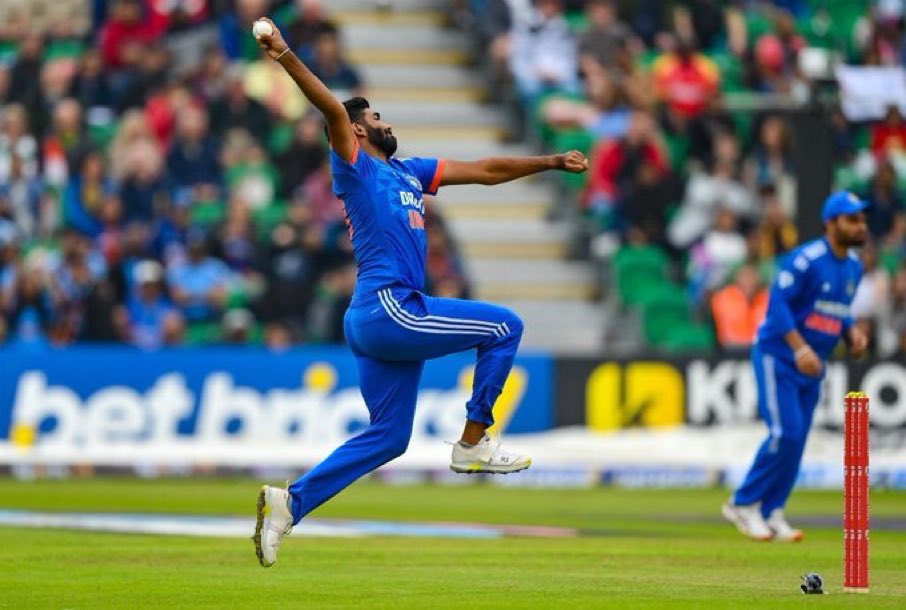Jasprit Bumrah tweaks run-up to stay injury-free

Ace pacer Jasprit Bumrah was out of action for close to 11 months and has missed several important tournaments in the meantime. He is finally back on the international scene after a lot of hard work in the nets and will be a key part of India’s project to win the upcoming Asia Cup and ODI World Cup. Ahead of that, the cricketer has reportedly revamped his action and remodelled his run-up to be more effective and to stay injury-free in the long run.
Notably, in the first T20I against Ireland, the 29-year-old picked up two wickets, giving away just 24 runs in his four overs. He looked a bit rusty initially, but as time passes, Bumrah is expected to regain his momentum and be as effective as before. Meanwhile, tracking his progress, an NCA source has confirmed Bumrah’s change in action and the reason behind that.
“Prior to his stress fracture breakdown, if you closely watch Bumrah’s bowling videos, he would first briskly walk six to seven steps and then load up at the bowling crease on his seventh stride to unleash his thunderbolts. While watching him bowl against Ireland, one could witness that he has increased his run-up by 2-3 strides with a bigger follow-through compared to earlier times. It’s not a massive revamp of his action but a slight bit of remodelling in order to stay injury free for a long time,” a source was quoted as saying by NDTV.
Post injury, he has increased I guess 2-3 strides at the max: Source
The source has also analysed Bumrah’s bowling before and after his injury, stating that the cricketer used to be like a fighter jet previously, where he would bowl rapidly and fast despite taking fewer steps. However, in the recent past, he has changed his stance, taking more strides, so that he puts less pressure on his back.
“Post injury, he has increased I guess 2-3 strides at the max. Now fast bowling requires strong legs. The slightly longer run-up is giving him time to build the momentum and allow his legs to be a force multiplier. And then a slightly longer follow-through that puts less pressure on the back just after release. I am sure this will help him in curbing injuries in future,” he observed.
